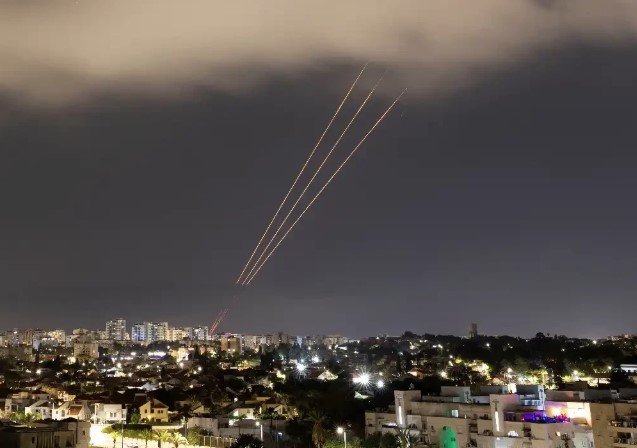The conflict in the Middle East took a new turn as Yemen’s Houthi movement announced that it had fired a hypersonic ballistic missile at Tel Aviv. According to their statement, the weapon used was identified as the Palestine-2, a newly introduced missile reportedly designed to carry multiple warheads.
Houthis Announce Hypersonic Missile Strike on Tel Aviv
The Houthis described the operation as a military action carried out by their missile troops. They stated that the strike targeted the Yaffo district of Tel Aviv, an area they consider strategically important. The group also claimed that the operation achieved its goals, although it did not share any details about the extent of damage or the number of casualties.
By emphasizing that they used a hypersonic ballistic missile, the Houthis presented themselves as possessing advanced technology capable of reaching deep into Israeli territory. The announcement drew attention not only because of the scale of the claim but also because many consider Tel Aviv one of the most important urban and economic centers in the region.
Yemeni forces fire hypersonic missile at Tel Aviv in retaliation for Gaza war
Understanding Hypersonic Ballistic Missiles
A hypersonic ballistic missile is a type of weapon that travels at speeds greater than Mach 5, which is five times faster than the speed of sound. At such high speeds, the missile is extremely difficult for air defense systems to detect and intercept. This makes it one of the most advanced and dangerous types of modern weapons.
Unlike traditional ballistic missiles, hypersonic missiles are capable of maneuvering during flight. This maneuverability makes them less predictable and increases their chances of bypassing radar systems. The Houthis further claimed that the Palestine-2 missile used in this attack carried multiple warheads. A missile with multiple warheads can split in mid-flight and strike several different targets, which magnifies its destructive potential.
Inside Hezbollah’s Downfall: Israel’s Decades-Long Intelligence War
Military analysts have often described hypersonic weapons as game changers in modern warfare because they drastically reduce reaction times. For cities like Tel Aviv, which is heavily populated and densely built, the threat of such a missile poses serious risks. Even without independent confirmation, the claim itself is enough to create alarm among observers of the ongoing conflict.
Regional Reactions to the Claimed Attack on Tel Aviv
The statement issued by the Houthis stressed that “important targets” in the Yaffo district of Tel Aviv were the main focus of the strike. People recognize this area for its historical significance and its location within the broader Tel Aviv metropolitan zone. By naming Tel Aviv specifically, the group underlined that the attack was not random but that they directed it at sites they consider symbolic and strategic.
Regional media channels quickly spread news of the claimed strike. The idea that the Houthis could launch a hypersonic ballistic missile from Yemen and reach Tel Aviv highlights how the range of conflict has widened. While no one has yet clearly confirmed the actual impact, the fact that the Houthis named Tel Aviv as the target demonstrates how the city continues to remain at the center of wider regional disputes.
Nuclear Chain Reaction? Iran Says Pakistan Will Launch Shaheen-3 on Israel If Tel Aviv Goes Nuclear
The Houthis, who control large areas of Yemen, continue to engage in military operations that extend beyond their own borders. They have used drones and long-range missiles in past attacks, but this latest claim of using a hypersonic ballistic missile sets it apart. If verified, it would indicate that the group has managed to access or develop advanced missile technology.
The Houthis declared the operation a success, asserting that their missile troops had achieved the planned objectives. Whether or not the missile caused physical destruction in Tel Aviv, the announcement itself has carried significant weight. It shows the ongoing evolution of their tactics and their willingness to use high-profile targets to send political and military messages.
